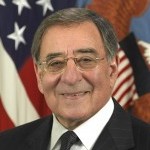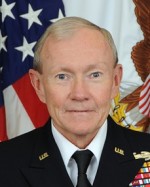
The new defense strategy announced by President Barack Obama on January 5, 2012 as part of the administration’s economic austerity sets the stage for dramatic cuts in the defense budget, reducing $487 billion in defense spending over the next decade. While maintaining the indisputable leadership as the prominent world power, the new strategy also sets the guidelines for the nation’s armed services preparing to face new challenges in the next decade.
The new strategy reflects America’s shifting priorities from the Middle East and Central Asia to Iran, North Korea, and eventually China, evolving as the dominant power in the Asia-Pacific domain. With the draw down of direct involvement in Afghanistan after 2014,
Washington hopes that newly established and long-term alliances would suffice in maintaining Washington’s regional interests. This shift should pertain predominantly to Pakistan and the Central Asia republics, hitherto being critical assets for supporting operations the war in Afghanistan.
Viewing the potential threat from Iran, the U.S. is expected to maintain its military presence and capabilities in the Middle East, prevailing in the Arabian Sea area, despite the withdrawal from Iraq, to remain capable in deterring and defeating Iranian aggression while supporting political progress and reform.
New Regional Focus
Timing the announcement of the new strategic plan soon after the withdrawal from Iraq, and during the relatively quiet Afghan winter season, presented no coincidence. The administration can already foresee the gradual withdrawal from Afghanistan, allowing the military to regroup and focus on broader contingencies. Other regions, including Central Asia and North Africa will eventually shift to a second priority, where conflicts and stability should expected to be maintained by its allies, rather than with direct involvement of U.S. forces. The U.S. will seek “innovative ways to sustain presence elsewhere”, pursuing new security partnerships, developing low-cost and small-footprint approaches, rotational deployments and periodical joint exercises with allies.
This approach was successfully implemented in Libya, where the U.S. quickly withdrew from its leading position, yet continued supporting the operations primarily with logistical and ISR assets by manned and unmanned facilities. The U.S. in its campaign against Islamic extremists and Al-Qaeda factions in Somalia and the Central African Republic of Congo also employs this modus operandi, using unmanned aircraft operating from bases in Ethiopia.
The President believes that at the end of the long-term nation-building process in Afghanistan, the U.S. will be able to ensure its security with smaller conventional ground forces. Therefore, the strategic review recommending part of the $487 billion in savings should come from decommissioning outdated Cold War-era systems, thus saving expensive maintenance and support costs, while investing in new capabilities, better suited for future requirements. Not surprisingly, these include intelligence, surveillance and reconnaissance (ISR), counterterrorism, countering weapons of mass destruction and the ability to operate in environments where adversaries are trying to deny access.
“We will protect our investments in special operations forces, new technologies like ISR and unmanned systems, space and cyberspace capabilities,“ Defense Secretary Leon E. Panetta said. Today’s ISR, unmanned and networked warfare capabilities are employed primarily in uncontested airspace environment, supporting counter-terror and counter insurgency (COIN) activities, as part of low intensity operations. Hence, the fourth priority defined in the plan is to provide the U.S. with the capability to operate in denied access environment, employing ISR and precision effects against modern and sophisticated foes.

Force Structure and Force generation
With the end of U.S. military commitment in Iraq, and the drawdown already underway in Afghanistan, the Army and Marine Corps will no longer need to be sized supporting the large scale, long-term stability operations that dominated military priorities and force generation over the past decade.
A smaller force may change the U.S. military capability, in order to fight, win and sustain two major operational contingencies simultaneously. “Fundamentally, our strategy has always been about our ability to respond to global contingencies wherever and whenever they happen. This concept does not change.” Army Gen. Martin E. Dempsey, chairman of the Joint Chiefs of Staff said. “Because we will be somewhat smaller, these risks will be measured in time and capacity. However, we have to be honest — we could face even greater risks if we did not change from our current approach… It prepares us for what we anticipate needing in 2020.”
Addressing this concern, Secretary Panetta added: “We are confronting the threats of the 21st century and that demands greater flexibility to shift and deploy forces to fight and defeat any enemy anywhere. How we defeat that enemy may vary across conflicts. But make no mistake — we will have the capability to confront and defeat more than one adversary at a time.”
Another important capability to be preserved is the services’ ability in maintaining the critical skills gained through over two decades of wars, the these skills and know-how should be maintained in the force structure and support the services’ future force generation potential, most probably, in a modified reserve component, ensuring the services’ capacity to mobilize sizeable forces at relatively short time. Secretary Panetta added that the new plan should structure and pace the reductions in the nation’s ground forces in such a way that they can surge, regenerate, and mobilize capabilities required for future contingency. “Building in reversibility and the ability to quickly mobilize will be key.” Panetta said, explaining the mix of elements in the active and reserve components will be reexamined, as well as maintaining a strong National Guard and Reserve, retaining a healthy cadre of experienced NCOs and midgrade officers, and preserving the health and viability of the nation’s defense industrial base.
Toward a ‘Joint Force 2020’
As described by Gen. Dempsey describes the new strategy as a waypoint in a continuous and deliberate process in developing the joint force foreseen in 2020. “There are four budget cycles between now and then, each of these cycles presents an opportunity to adjust how and what we do to achieve this strategy in the face of new envisaged threats … and in the context of a changing security environment.”
General Dempsey welcomes the change even if it responding already to the new fiscal environment, “even if we didn’t have fewer resources, we would be expected to change.” Dempsey added the new shift mandates new ways of operating and partnering, rebalancing focus by region and mission, and redirecting important investments to meet emerging and proven capabilities like cyber and special operations. Secretary Panetta agreed, mentioning his department would need to make a strategic shift regardless of the nation’s fiscal situation. “That is the reality of the world we live in.” Panetta concluded.

















